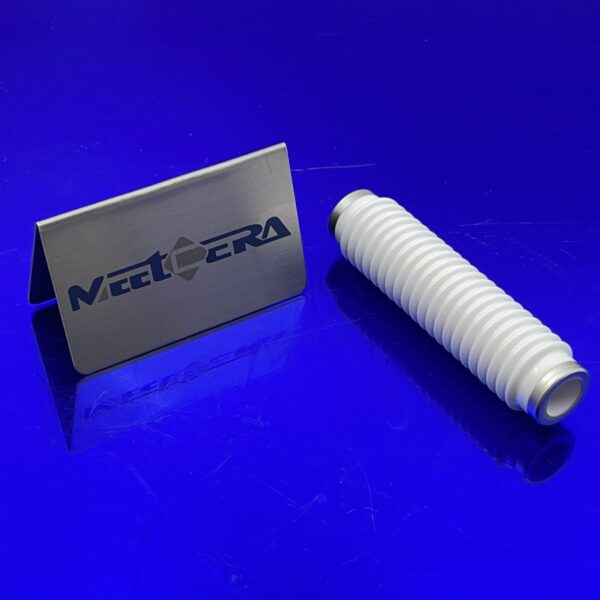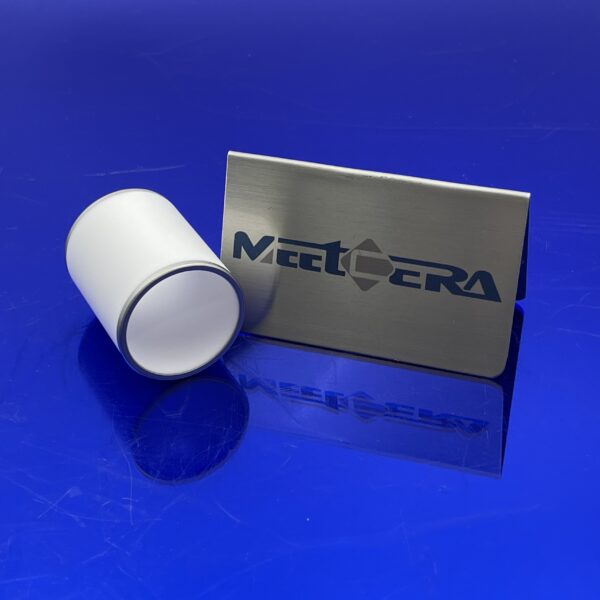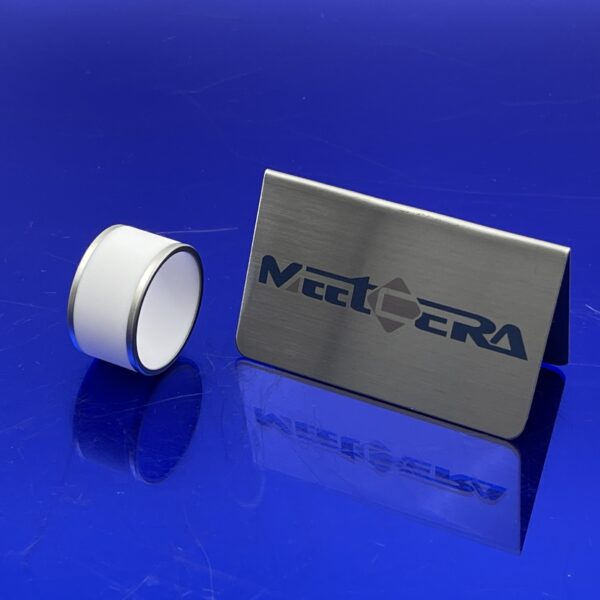How to use metallized ceramics for electronic packaging?
When I think about modern electronics, I think about small, powerful chips doing complex jobs. These chips need protection and connection to the outside world. This is the job of electronics packaging. It is not just a box; it is a critical part of the system. For many demanding applications, standard plastic packaging is not enough. Metallized ceramics1 offer a much better solution. This article explains why metallized ceramics are vital for advanced electronics packaging by looking at the problems they solve for designers and manufacturers.
What is Electronics Packaging?
Electronics packaging is the enclosure that surrounds the electronic chip (the integrated circuit or IC). Its main jobs are:
- Protect the chip from the environment (moisture, dust, chemicals, light).
- Provide a way to connect the tiny electrical points on the chip to the larger pins or pads on a circuit board.
- Help remove heat generated by the chip.
- Give mechanical support to the fragile chip.
For simple electronics, plastic packages work fine. But for high-performance, high-reliability, or harsh-environment applications, plastic has limits. This is where advanced materials like metallized ceramics become necessary.
Are sensitive chips affected by the environment?
Electronic chips are very sensitive. They must be kept safe from moisture, gases, and other contaminants in the air.
This is a problem because if the package is not perfectly sealed, these harmful substances can get inside. Moisture is especially damaging; it can cause corrosion on the tiny metal parts of the chip and the connections. Contaminants can cause electrical leakage paths. This leads to the chip failing prematurely or behaving unreliably. Field failures due to moisture ingress are costly, requiring product recalls or difficult repairs. It makes products unreliable for use outdoors or in humid conditions.
Metallized ceramic packages can be sealed using high-reliability methods like brazing. By metallizing the ceramic base and a ceramic or metal lid, they can be joined together with a braze alloy under heat. This creates a true hermetic seal2, completely blocking the entry of moisture, gases, and contaminants from the environment. This protects the chip and ensures long-term reliability.
I remember working on a project for outdoor communication equipment. The first versions used plastic packages, and we saw high failure rates after a few months in humid areas. Switching to hermetically sealed metallized ceramic packages solved this problem completely.
Is heat dissipation good in high power chips?
Modern electronic chips, especially processors, power management chips, and RF components, produce a lot of heat when they operate.
This is a problem because heat is the enemy of electronics. As the chip gets hotter, its performance degrades. It might run slower or make errors. High temperatures also accelerate the aging process of the chip, significantly reducing its lifespan. If heat cannot escape the package efficiently, the chip can overheat and fail completely. This requires adding bulky and expensive cooling systems (like heat sinks or fans) to the overall product design.
Ceramic materials used in packaging, such as alumina or aluminum nitride, have much better thermal conductivity3 than organic materials like plastic or fiberglass (used in standard PCBs). When the chip is mounted on a ceramic base, heat is efficiently conducted away from the chip through the ceramic material and into the surrounding environment or a heat sink. This keeps the chip cooler and helps it last longer.
Can many reliable electrical connections be made in tight spaces?
Electronic chips have many very small connection points (pads) around their edges or on their surface. The package must connect these tiny pads to the larger pins or traces that go to the circuit board.
This is a problem because creating many reliable connections in a small area is technically challenging. The package needs fine patterns of conductive material. These connections must withstand temperature changes and vibration without breaking. Organic materials can limit how fine the conductive lines can be (density) and can have poor electrical performance at high frequencies.
Metallization on ceramic allows for the creation of precise, high-density conductive patterns on the package surface. Techniques like thin-film or thick-film metallization create fine lines and pads that match the chip’s small features. These metal layers can be reliably connected to the chip (e.g., by wire bonding, flip-chip bonding) and to external pins or pads, providing high-density, reliable electrical pathways that perform well even at high frequencies.
Why does packaging need to be strong and stable?
The electronic package must provide mechanical support and protection for the fragile chip inside. It also needs to withstand physical stress during manufacturing, assembly, and product use.
This is a problem because electronic devices can be subjected to vibration, shock (if dropped), or bending forces. If the package material is not strong or rigid enough, it can crack, deform, or break. This damages the chip or breaks the electrical connections, causing the device to fail. In applications like automotive engines or industrial robots, the packaging must be very robust.
Ceramic materials are inherently hard, stiff, and strong, especially in compression. A ceramic package provides robust mechanical protection for the enclosed chip against physical impacts, vibration, and bending stresses. Its rigidity ensures that the fine connections inside are not stressed or broken by external forces, contributing to device reliability in demanding mechanical environments.
Why is it important to keep the electrical signals separate within the package?
Within a complex electronic circuit on a chip, different parts need to be electrically isolated from each other. The package structure also needs to provide this isolation between different connections or layers.
This is a problem because if conductive paths are too close or if the base material is not a good insulator, electrical signals can interfere with each other (crosstalk), or current can leak between unintended points (leakage current). This causes the electronic device to malfunction or perform poorly. Maintaining clear, effective electrical isolation is critical for the proper operation of integrated circuits.
The base ceramic material of the package is an excellent electrical insulator (a dielectric). Metallization is applied in precise patterns to create the necessary conductive paths. The surrounding ceramic material provides robust electrical isolation between these conductive features, preventing shorts, minimizing signal interference, and ensuring that electricity flows only where it is designed to go.
How Metallized Ceramics Provide the Solution
Metallized ceramics offer a set of combined properties that are perfect for high-performance electronics packaging. The ceramic body provides excellent electrical insulation, high temperature resistance, mechanical strength, and sometimes good thermal conductivity. The metallization adds the ability to create fine electrical circuits on the surface and, critically, allows for reliable, hermetic sealing through brazing. This combination directly addresses the major pain points in packaging sensitive, high-power, or high-frequency electronics, especially for applications requiring high reliability.
| Feature | Addresses Problem For… | Key Benefit in Electronics Packaging |
|---|---|---|
| Ceramic Body (Insulation) | Electrical Shorts, Signal Interference | Reliable electrical isolation |
| Ceramic Body (Thermal Prop.) | Overheating Chips | Efficient heat dissipation |
| Ceramic Body (Mechanical) | Physical Damage (Shock, Vibration) | Robust protection, mechanical stability |
| Ceramic Body (Environmental) | Chemical/Moisture Degradation | Durability in harsh environments |
| Metallization Layer | High-Density Interconnections | Fine electrical patterns, support complex chips |
| Metallization + Sealing (Brazing) | Moisture/Gas Ingress, Non-Hermetic Seals | True hermetic sealing, environmental protection |
This table shows how the different aspects of metallized ceramics work together to solve the complex challenges of electronics packaging.
What Makes Up Metallized Ceramic Packaging?
Metallized ceramic packaging is basically a type of housing for integrated circuits (ICs) or other electronic components. It is made using two main parts:
- A ceramic body or base: This is typically made from alumina ($Al_2O_3$) or aluminum nitride ($AlN$). This ceramic provides the main structure and insulating properties.
- Metal layers or patterns: These are applied to the surface of the ceramic body in specific areas. The metal can be materials like tungsten, molybdenum, titanium, nickel, or gold, depending on the needed function (like conductivity or solderability).
The packaging takes different forms, like a flat base with a lid (a package), or a substrate board with conductive traces. The key is the combination of the ceramic material’s strengths with the electrical and joining capabilities added by the metallization.
Why is chip stabilization important?
Electronic chips need to sit on something solid and reliable.
This is a problem because the chip itself is very small and fragile. It needs physical support. Also, when electronics heat up or cool down, the materials they are mounted on expand or contract. If the base material changes size too much or too differently from the chip, it puts stress on the tiny connections, which can break. Using a base that is not strong enough means the whole package can bend or break under physical stress like vibration or shock.
The ceramic body of the package provides mechanical strength and rigidity. It forms a very stable base that protects the chip from physical stress. Ceramic materials like alumina also have low thermal expansion coefficients4, meaning they change size very little with temperature changes. This minimizes stress on the chip and its connections during thermal cycling, ensuring reliability.
I saw an early product design use an organic board as a base for a heavy power chip. The board flexed slightly, and over time, the solder joints cracked. A switch to a ceramic base solved this structural issue.
What environments do I need to keep chip sealing away from?
Many electronic chips, especially high-reliability ones, must be protected from moisture, oxygen, and other contaminants in the air.
This is a problem because moisture entering the package can cause corrosion of the metal parts on the chip and connections. This leads to the chip failing. Gases can also cause problems over time. If the package is not completely sealed, it cannot guarantee long-term reliable operation in humid or chemically active environments. Standard seals like plastic molding or epoxy fills are often not truly hermetic (airtight).
The combination of the ceramic body and metallized areas allows for hermetic sealing. Metalized areas on the ceramic base and lid enable them to be joined using brazing. Brazing creates a strong, permanent, metallurgical bond that forms a hermetic seal, completely blocking the entry of moisture and gases. This protects the sensitive chip inside.
How These Parts Work Together
Metallized ceramic packaging works by combining the best features of ceramic and metal. The ceramic provides the structure, insulation, and heat handling. The metallization adds the ability to route electrical signals on the surface and create reliable, hermetic seals. Together, they form a packaging solution that is mechanically strong, thermally conductive, electrically insulating, environmentally sealed, and allows for complex interconnections. It is a multi-functional component.
| Component Part | Provides Function For… | Addresses Need For… |
|---|---|---|
| Ceramic Body | Structure, Insulation, Heat Transfer | Physical Protection, Electrical Isolation, Heat Mgmt |
| Metallization | Conductive Pathways, Joining Surfaces | Electrical Interconnections, Hermetic Sealing |
| Combined System | Hermetic Sealing, Overall Durability | Environmental Protection, Long-Term Reliability |
This table shows how the different parts contribute to the overall function and value of the metallized ceramic package.
Conclusion
The demands placed on electronics packaging are increasing as devices become smaller, more powerful, and operate in tougher environments. Standard packaging materials have significant limitations. Metallized ceramics provide a robust and reliable solution by offering a unique combination of properties: superior electrical insulation, excellent thermal management capabilities, high mechanical strength, resistance to harsh environments, and the crucial ability to form true hermetic seals. For engineers and manufacturers working on applications where performance, reliability, and longevity are paramount, understanding and utilizing metallized ceramic packaging5 is not just an option; it is often a necessity.
-
Explore how metallized ceramics enhance reliability and performance in electronics packaging, making them essential for modern applications. ↩
-
Learn about the importance of hermetic seals in preventing moisture and contaminants from damaging sensitive electronics. ↩
-
Discover the role of thermal conductivity in maintaining chip performance and longevity in high-power applications. ↩
-
Discover the significance of thermal expansion coefficients in maintaining the integrity of electronic components during temperature changes. ↩
-
Explore this link to understand how metallized ceramic packaging enhances reliability and performance in electronic devices. ↩







No comment